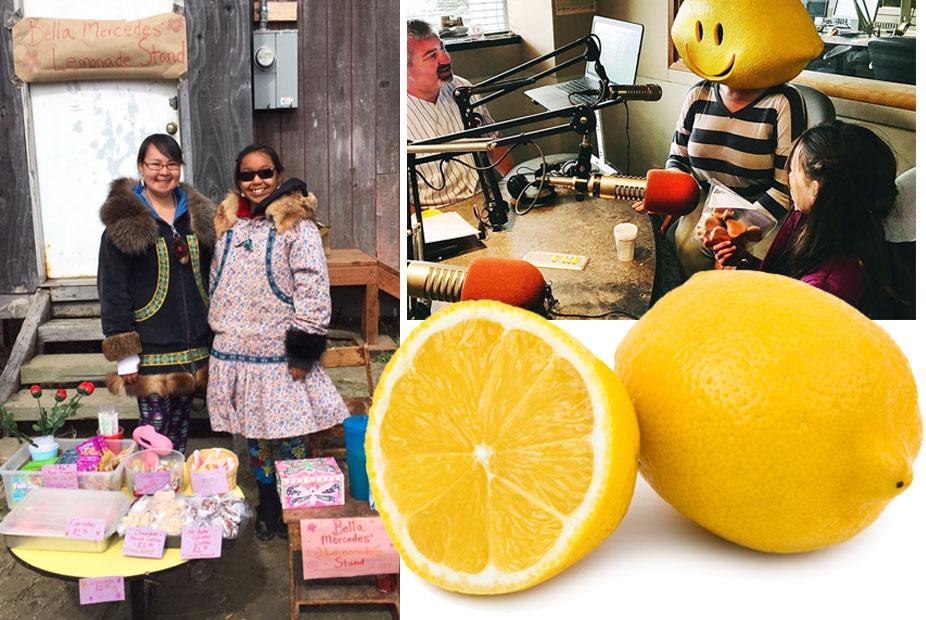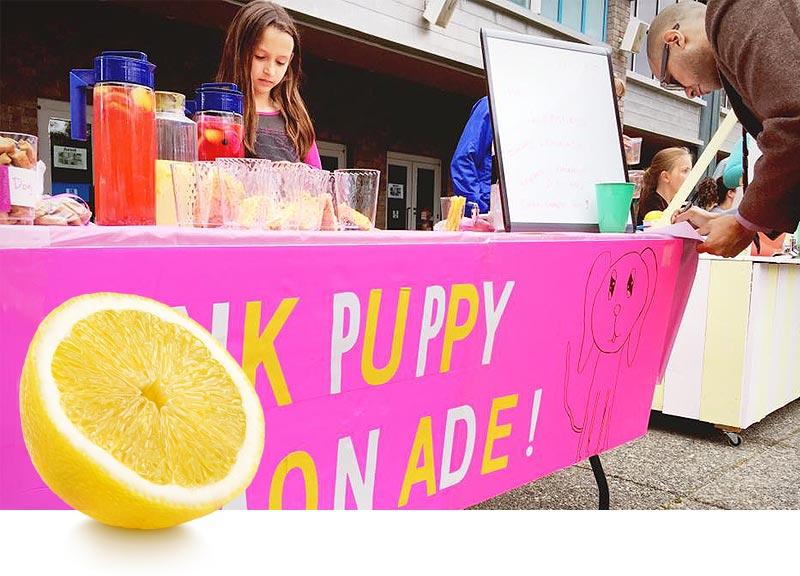When Life Gives You Lemons, Start Your Own Business
Find out how creating a lemonade stand teaches kids about profit-making goals, serving customers, repaying investors — and giving back to their communities
When Life Gives You Lemons, Start Your Own Business
Charlotte Bittner, 9, wants to be a veterinarian and own an animal clinic when she grows up. Bella Mercedes Ahgupuk, 14, wants to be a health aide. They both agree that participating in Lemonade Day has helped start them on the path toward their future careers.
“It gives kids a chance to do business when they’re kids, and learn how to do it early on,” said Charlotte, who lives in Anchorage, Alaska.
Lemonade Day is a free program that teaches kids how to start, own, and operate their own business — a lemonade stand. Each child who registers receives a backpack with a workbook that teaches them about creating budgets, setting profit-making goals, serving customers, repaying investors, and giving back to the community. The program has 65 chapters in three countries and has reached more than a million kids since 2007, according to its website.
Charlotte, Bella, and more than 4,000 other kids participated in the 7th annual Lemonade Day Alaska, which was hosted in June by the University of Alaska Center for Economic Development in Anchorage.
"Entrepreneurs are inventing Alaska's future economy,” said Nolan Klouda, executive director of UACED. “Entrepreneurial thinking is a process that can be learned at a young age and chart the course for the future — not just for individuals — but our whole state."
Wells Fargo has been a presenting sponsor of Lemonade Day Alaska for five years, donating $25,000 annually. Team members helped assemble more than 4,000 backpacks, and Wells Fargo branches served as pickup locations for this year’s event. Fifteen Wells Fargo branches in Alaska also hosted workshops to teach kids about running a small business and saving for the future, incorporating lessons from its Hands on Banking® financial education program.
“The best part about Lemonade Day is how excited the kids get as they go through the program and prepare for and then sell their product on the big day,” said Dana Rogers, a Community Relations consultant for Wells Fargo in Anchorage. “It’s more than just a lemonade stand to them. They work on marketing, merchandising, and pricing their product. In addition, they learn about investors and are able to get a real feel for what it’s like to be a small business owner. Our hope with sponsoring Lemonade Day is that we are inspiring the future entrepreneurs and leaders of Alaska.”
Spending, saving, and sharing proceedsLemonade Day teaches kids how to set goals, solve problems, and build their confidence. The average lemonade stand earns about $250, according to UACED, and the kids are encouraged to spend some, save some, and share some of their earnings by giving back to their communities. Since 2007, more than $1 million of the money raised by Lemonade Day stands has been donated to local nonprofits, according to UACED.
Bella, who lives in Shishmaref, Alaska, has participated in Lemonade Day for almost 10 years. She said the reason she got involved was to give back. She donates all of her profits to her 13-year-old brother, who lives in a foster home in Anchorage because he has diabetes and other special needs that require him to live near a hospital.
Charlotte has donated her lemonade stand profits to Alex’s Lemonade Stand Foundation, which raises money and awareness for childhood cancer causes, and the Roscoe Fund, which helps assist owners with rescue animals in need of emergency medical treatment. Charlotte said she chose to donate to the Roscoe Fund this year because she is a “big animal lover.” She called her stand “Pink Puppy Lemonade.”
Running their business
Since Bella and Charlotte participated in previous Lemonade Days, they both made improvements to their lemonade stands this year and are looking forward to implementing new ideas next year. For her stand this year, Bella made about 16 quarts of lemonade, two dozen cupcakes, and four dozen cookies. She also ordered and sold candy that people in the town can’t find at the local store. She typically earns $200 at her lemonade stand.
One of the first steps for participating in Lemonade Day is to find a mentor, and Bella’s is her mother, Irene Ahgupuk. “She handles the money,” Ahgupuk said. “I help supervise her and be with her at the stand. I helped make the cookies this year, but she makes the cupcakes and other desserts. She likes decorating them.”
Ahgupuk said Lemonade Day not only teaches Bella about managing money, but it also reminds her that people are in need. “By learning to give to others now, she’ll continue to do that throughout her life,” she said.
Charlotte, who participated for the second time this year, sold three types of lemonade at her stand: regular, raspberry, and blueberry, as well as homemade cookies and dog treats. She attracted more customers to her lemonade stand by taking samples to tourists whose bus stopped at a park across the street. She made a $186 profit and is already considering selling more types of cookies next year.
Her parents are excited by the skills and experience Charlotte has gained by participating in Lemonade Day. “One of the things that’s beneficial is they learn the hard work that goes into it,” said Juli Lucky, Charlotte’s mother. “It opens their eyes to the amount of work and planning it takes to run a business.”



